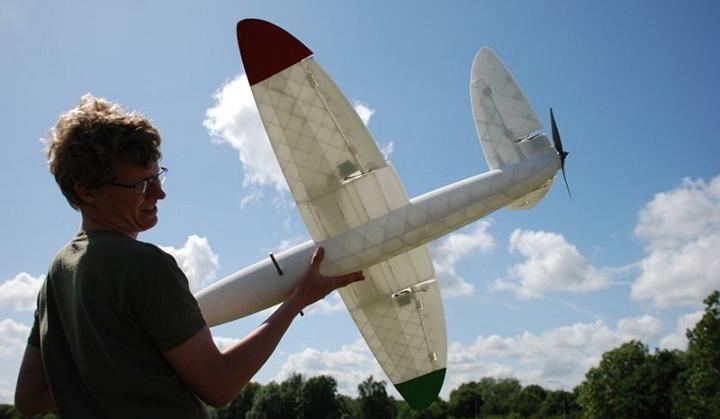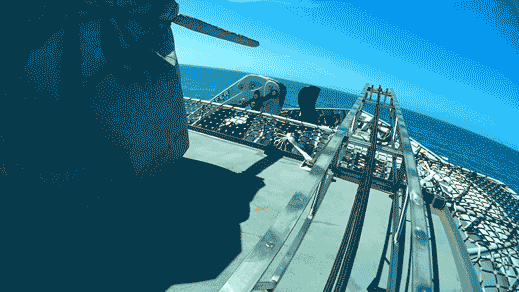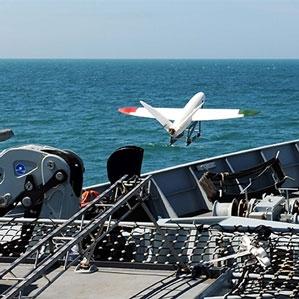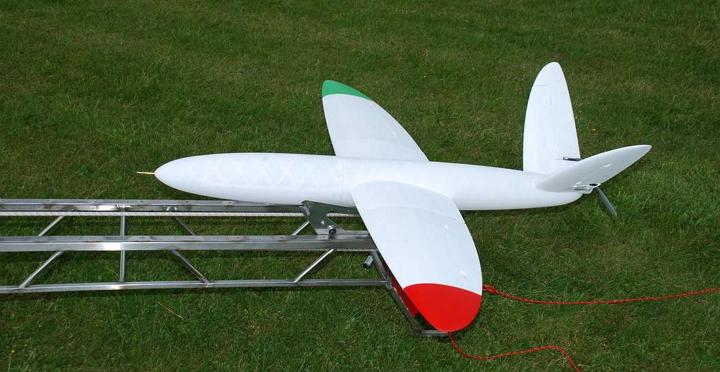 The HMS Mersey is a River-class, patrol vessel in the British Royal Navy, and she was one of three vessels commissioned to replace five Island-class patrol vessels. Named for the River Mersey, the ship was the last Royal Navy vessel to be launched from the Woolston shipyard. Now the HMS Mersey has been used as the platform to launch an unusual piece of equipment from her gun deck in exercises off the southern coast of England – an inexpensive 3D printed drone.
The HMS Mersey is a River-class, patrol vessel in the British Royal Navy, and she was one of three vessels commissioned to replace five Island-class patrol vessels. Named for the River Mersey, the ship was the last Royal Navy vessel to be launched from the Woolston shipyard. Now the HMS Mersey has been used as the platform to launch an unusual piece of equipment from her gun deck in exercises off the southern coast of England – an inexpensive 3D printed drone.
With a wingspan of 1.5 meters, the propeller-driven SULSA (Southampton University Laser Sintered Aircraft) drone was 3D printed onshore and assembled on the ship for tests meant to demonstrate how what are essentially “disposable” drone aircraft might be used for military and rescue applications going forward.
 The Institution of Mechanical Engineers says that printing aircraft like the SULSA onboard could not only cut costs, but could also allow a crew to quickly adapt missions. Within five years, naval ships could be equipped with multi-material 3D printers capable of producing UAVs like the SULSA, each one tailored to specific mission tasks.
The Institution of Mechanical Engineers says that printing aircraft like the SULSA onboard could not only cut costs, but could also allow a crew to quickly adapt missions. Within five years, naval ships could be equipped with multi-material 3D printers capable of producing UAVs like the SULSA, each one tailored to specific mission tasks.
Jim Scanlan, a professor at Southampton University who works on the SULSA project, says this 3D printed version of the drone represents a change in thinking. He says the ship-launched drones already in service are typically larger – and cost millions – but their 3D printed counterparts are nearly disposable in comparison.
“The navy thinks today’s ship-launched UAVs are too expensive,” Scanlan says. “Whoever is operating it is always petrified they might lose one. If its single engine coughs, it goes for a swim.”
 Scanlan says each SULSA can be printed for just a few thousand pounds, and while they can only take on missions of around 40 minutes, that would be sufficient to take on tasks like reports of piracy. The SULSA weighs just three kilograms and it’s launched from a three-meter-long catapult.
Scanlan says each SULSA can be printed for just a few thousand pounds, and while they can only take on missions of around 40 minutes, that would be sufficient to take on tasks like reports of piracy. The SULSA weighs just three kilograms and it’s launched from a three-meter-long catapult.
The test launch was meant to demonstrate how more-or-less disposable drones that could, in a pinch, be printed onboard might cut costs and let a crew adapt quickly to a new mission, for example after a natural disaster. The entire structure of the drone was built using an EOS EOSINT P730 nylon laser sintering machine.
Each SULSA drone can be snapped together in just minutes, and the electric aircraft can include an autopilot and achieve a top speed of nearly 100 mph.
The deputy maritime account manager at the Defence Science and Technology Laboratory, Kevin Franks, says 3D printing is drawing attention for a variety of applications.
“The ability to use additive manufacture to make a task-specific tool, component, device or even a vehicle out in the field or in a space-constrained moving ship, could have significant impact on the armed forces’ shape and capability,” Franks says.
What do you think about the SULSA drone the Royal Navy is testing for naval applications? Let us know in the 3D Printed SULSA Drone forum thread on 3DPB.com. Check out onboard footage in the video below, as well as more images of the 3D printed SULSA drone.
https://youtu.be/UR2p1IInJv4
Subscribe to Our Email Newsletter
Stay up-to-date on all the latest news from the 3D printing industry and receive information and offers from third party vendors.
You May Also Like
Printing Money Episode 17: Recent 3D Printing Deals, with Alex Kingsbury
Printing Money is back with Episode 17! Our host, NewCap Partners‘ Danny Piper, is joined by Alex Kingsbury for this episode, so you can prepare yourself for smart coverage laced...
Insights from Cantor Fitzgerald on AM’s Q1 2024 Landscape
A recent survey by Cantor Fitzgerald sheds light on the persistent challenges within the additive manufacturing (AM) industry in the first quarter of 2024. Based on responses from 38 industry...
3D Printing Financials: Xometry’s Scaling up and Strong Start to 2024
Xometry (Nasdaq: XMTR) kicked off 2024 with strong results, boosting its marketplace and technology to new heights. Both revenue and gross margin soared, fueled by an expanding global network of...
3D Printing Financials: Desktop Metal Targets Recovery Amid Net Losses and Revenue Downturn
Despite facing a decline in revenue and the persistent challenges of a tight economic climate, Desktop Metal (NYSE: DM) is making strides toward operational efficiency. The first quarter of 2024...


































